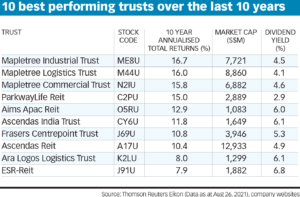
If you're wondering how to dollar-cost average your investments, read this article. How to set up and implement a DCA strategy, as well as the pros and cons. Read on to learn more! This article was originally published on eHow.com. It was republished with permission by the author. While this article will concentrate on DCA for plans 401k, it can also be used to apply to other retirement accounts.
Install a 401k program
You are contributing a steady percentage of your income each month to your retirement account when you set up your plan for 401(k). Each paycheck is automatically deducted and the money goes into stocks, bonds, or ETFs. These investments are the most commonly used in an individual retirement account. While this strategy may work well for some people, more experienced investors often choose to diversify their portfolios.

A 401k plan can help set up a plan with dollar-cost average. This type allows investors to make small, consistent investments. It reduces psychological stress and maximizes upside potential. This approach is great for long-term investments, but it can increase the risk associated with investing in stocks. This is an excellent way to invest in the long-term, and it can produce great returns.
There are disadvantages to dollar-cost averaging
Dollar-cost analysis is a great option to reduce emotion in your investment decisions. It encourages investors to invest on an ongoing basis, to save for more money, to establish a consistent investment pattern, all of which will contribute to your liquid assets. Dollar-cost averaging does have its disadvantages. These are the disadvantages of dollar-cost averaging.
The downside to dollar cost averaging is its inability to account for transaction costs and commissions. The investment involves selling and buying securities on a regular schedule, which means that investors have to pay broker fees. Broker commissions could significantly reduce your profits making dollar-cost Averaging unprofitable. Before you decide to use dollar-cost analysis to invest in stocks it is essential to fully understand the benefits and drawbacks.
Steps to implementing a DCA plan
A dollar-cost average plan is a great way to avoid the timing risk of investing by making periodic purchases over a long period of time. Dollar-cost averaging has the downside that investing a lump sum at once is more risky. However, it can deliver higher long-term return. Important is the timeframe because brokerage fees are often tied directly to each investment. Additionally, it is possible to invest in volatile times and earn lower returns.

Dollar-cost average is used to manage investments in a company's 401k plan. This involves selecting a set percentage and an amount for investing. Mutual funds are a pre-selected option for investment. Some investors use an automated program. However, they double-down on investments that lose value. This reduces the average cost. Steps to implementing a dollar-cost average plan
FAQ
Why is a stock called security.
Security is an investment instrument whose worth depends on another company. It can be issued as a share, bond, or other investment instrument. The issuer can promise to pay dividends or repay creditors any debts owed, and to return capital to investors in the event that the underlying assets lose value.
What is the difference between the securities market and the stock market?
The entire list of companies listed on a stock exchange to trade shares is known as the securities market. This includes stocks, bonds, options, futures contracts, and other financial instruments. Stock markets are typically divided into primary and secondary categories. Stock markets are divided into two categories: primary and secondary. Secondary stock markets allow investors to trade privately on smaller exchanges. These include OTC Bulletin Board Over-the-Counter, Pink Sheets, Nasdaq SmalCap Market.
Stock markets are important because they provide a place where people can buy and sell shares of businesses. The price at which shares are traded determines their value. The company will issue new shares to the general population when it goes public. Investors who purchase these newly issued shares receive dividends. Dividends can be described as payments made by corporations to shareholders.
Stock markets provide buyers and sellers with a platform, as well as being a means of corporate governance. The boards of directors overseeing management are elected by shareholders. The boards ensure that managers are following ethical business practices. If a board fails in this function, the government might step in to replace the board.
What is a mutual fund?
Mutual funds are pools of money invested in securities. Mutual funds offer diversification and allow for all types investments to be represented. This helps reduce risk.
Professional managers are responsible for managing mutual funds. They also make sure that the fund's investments are made correctly. Some funds let investors manage their portfolios.
Most people choose mutual funds over individual stocks because they are easier to understand and less risky.
Is stock a security that can be traded?
Stock is an investment vehicle where you can buy shares of companies to make money. This is done by a brokerage, where you can purchase stocks or bonds.
You could also invest directly in individual stocks or even mutual funds. There are more than 50 000 mutual fund options.
The difference between these two options is how you make your money. With direct investment, you earn income from dividends paid by the company, while with stock trading, you actually trade stocks or bonds in order to profit.
In both cases you're buying ownership of a corporation or business. However, when you own a piece of a company, you become a shareholder and receive dividends based on how much the company earns.
Stock trading allows you to either short-sell or borrow stock in the hope that its price will drop below your cost. Or you can hold on to the stock long-term, hoping it increases in value.
There are three types for stock trades. They are called, put and exchange-traded. Call and Put options give you the ability to buy or trade a particular stock at a given price and within a defined time. ETFs are similar to mutual funds, except that they track a group of stocks and not individual securities.
Stock trading is a popular way for investors to be involved in the growth of their company without having daily operations.
Stock trading can be a difficult job that requires extensive planning and study. However, it can bring you great returns if done well. It is important to have a solid understanding of economics, finance, and accounting before you can pursue this career.
Are bonds tradeable?
Yes they are. You can trade bonds on exchanges like shares. They have been for many years now.
The difference between them is the fact that you cannot buy a bonds directly from the issuer. They must be purchased through a broker.
Because there are less intermediaries, buying bonds is easier. This means you need to find someone willing and able to buy your bonds.
There are several types of bonds. While some bonds pay interest at regular intervals, others do not.
Some pay interest annually, while others pay quarterly. These differences allow bonds to be easily compared.
Bonds are great for investing. Savings accounts earn 0.75 percent interest each year, for example. If you invested this same amount in a 10-year government bond, you would receive 12.5% interest per year.
If you were to put all of these investments into a portfolio, then the total return over ten years would be higher using the bond investment.
What is a REIT?
A real estate investment Trust (REIT), or real estate trust, is an entity which owns income-producing property such as office buildings, shopping centres, offices buildings, hotels and industrial parks. These are publicly traded companies that pay dividends instead of corporate taxes to shareholders.
They are similar to a corporation, except that they only own property rather than manufacturing goods.
What are the benefits to owning stocks
Stocks are more volatile that bonds. If a company goes under, its shares' value will drop dramatically.
If a company grows, the share price will go up.
Companies often issue new stock to raise capital. Investors can then purchase more shares of the company.
Companies use debt finance to borrow money. This gives them access to cheap credit, which enables them to grow faster.
Good products are more popular than bad ones. The stock price rises as the demand for it increases.
As long as the company continues to produce products that people want, then the stock price should continue to increase.
Statistics
- "If all of your money's in one stock, you could potentially lose 50% of it overnight," Moore says. (nerdwallet.com)
- Ratchet down that 10% if you don't yet have a healthy emergency fund and 10% to 15% of your income funneled into a retirement savings account. (nerdwallet.com)
- For instance, an individual or entity that owns 100,000 shares of a company with one million outstanding shares would have a 10% ownership stake. (investopedia.com)
- Our focus on Main Street investors reflects the fact that American households own $38 trillion worth of equities, more than 59 percent of the U.S. equity market either directly or indirectly through mutual funds, retirement accounts, and other investments. (sec.gov)
External Links
How To
How to Invest in Stock Market Online
One way to make money is by investing in stocks. There are many options for investing in stocks, such as mutual funds, exchange traded funds (ETFs), and hedge funds. The best investment strategy depends on your risk tolerance, financial goals, personal investment style, and overall knowledge of the markets.
To become successful in the stock market, you must first understand how the market works. This includes understanding the different investment options, their risks and the potential benefits. Once you have a clear understanding of what you want from your investment portfolio you can begin to look at the best type of investment for you.
There are three major types of investments: fixed income, equity, and alternative. Equity refers to ownership shares of companies. Fixed income refers to debt instruments such as bonds and treasury notes. Alternatives include commodities, currencies and real estate. Venture capital is also available. Each option comes with its own pros and con, so you'll have to decide which one works best for you.
You have two options once you decide what type of investment is right for you. The first strategy is "buy and hold," where you purchase some security but you don't have to sell it until you are either retired or dead. Diversification is the second strategy. It involves purchasing securities from multiple classes. You could diversify by buying 10% each of Apple and Microsoft or General Motors. Buying several different kinds of investments gives you greater exposure to multiple sectors of the economy. This helps you to avoid losses in one industry because you still have something in another.
Another important aspect of investing is risk management. Risk management is a way to manage the volatility in your portfolio. If you were only willing to take on a 1% risk, you could choose a low-risk fund. A higher-risk fund could be chosen if you're willing to accept a risk of 5%.
The final step in becoming a successful investor is learning how to manage your money. Managing your money means having a plan for where you want to go financially in the future. A good plan should cover your short-term goals, medium-term goals, long-term goals, and retirement planning. Then you need to stick to that plan! Keep your eyes on the big picture and don't let the market fluctuations keep you from sticking to it. Keep to your plan and you will see your wealth grow.